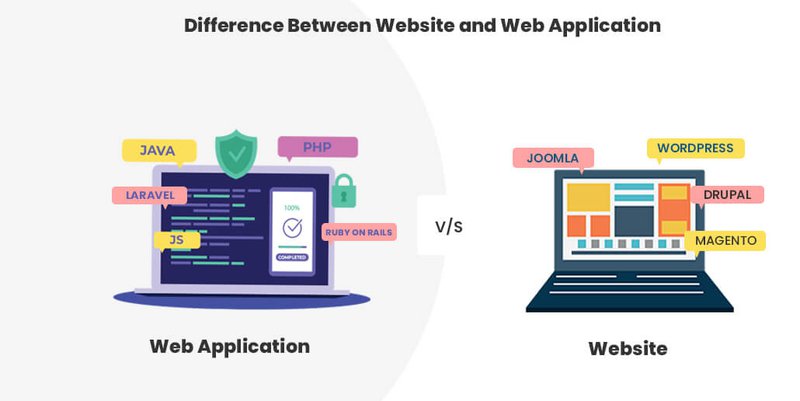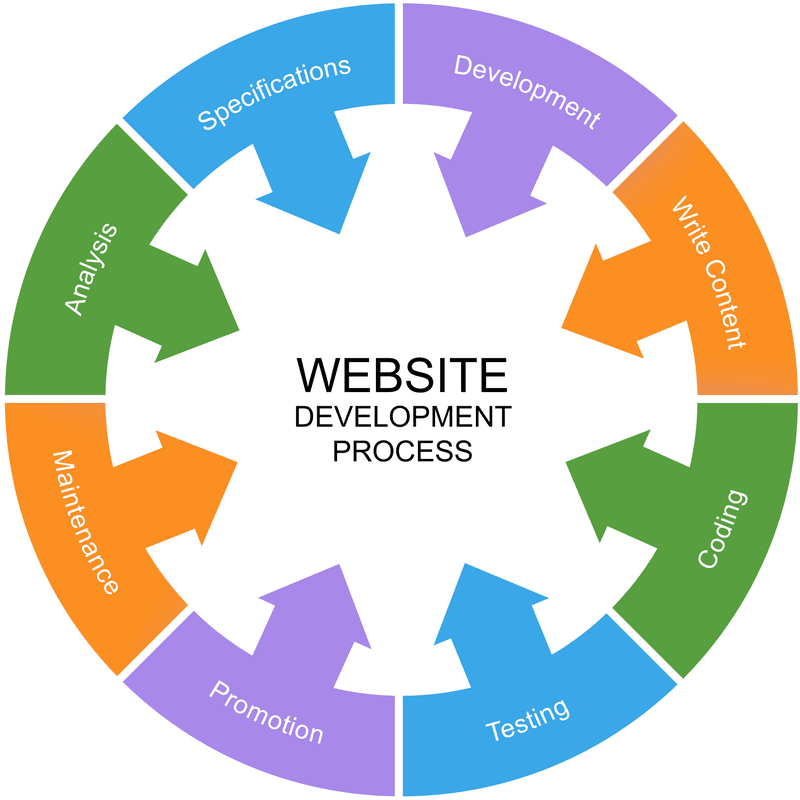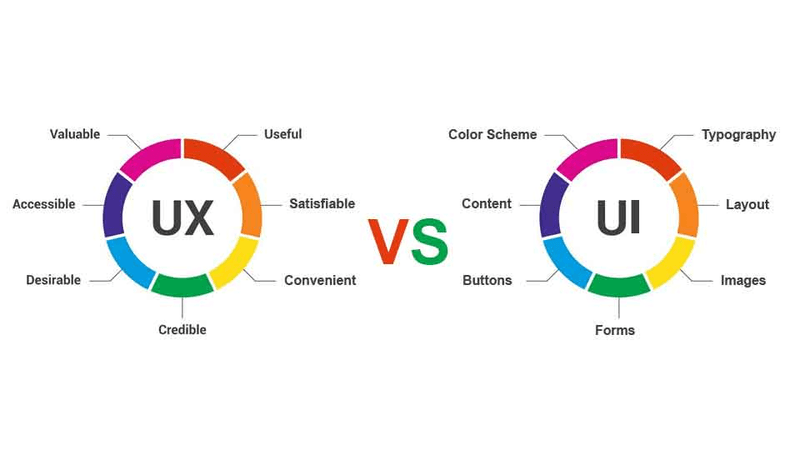
When companies want to establish a digital presence, they ask whether they need a website or a web application. Many people believe that anything typed into the browser's address bar will take them to the desired website. The problem is that the URLs you visit might not be for a website. Website and web application Both phrases appear similar to the end-user since the definitions are contentious and overlap.

So, to remedy this confusion, in this article, we will discuss the following:
A website is a collection of publicly available, interconnected web pages with a specific & single domain name. It can be created and managed by an individual, a company, or an organization. The website intends to serve several functions. They are generally informative. Consider your preferred blog or news website, for instance. They disseminate information to the end-user.

A website is operated on one or more web servers. It can be accessed via an IP address over a network such as an internet or a private local area network.
Websites are classified into two types:
These are created with simple programming languages such as HTML, CSS, and JavaScript. They are considered static because they lack a database with which a user can interact. As a result, they show identical material to every user who visits them.
These are more complicated and involve back-end user engagement. In addition to specialized HTML, CSS, and JavaScript. Unlike static, they display changeable content based on a variety of parameters.
Let's look at some instances of websites we possess currently after learning these two primary sorts of websites:
One of the essential duties web developers have is to create a user-friendly website. This is because web pages are primarily rated based on how they appear. Therefore, the aesthetic is a significant component in determining how long your website will be able to retain the attention of its viewers.
Here are some pointers to bear in mind when you create a great website:
Here are the reasons your business needs a website:
A web application is software that can be made available using a browser. A browser is a program that allows you to browse the internet. Authentication is required for web applications. The web application incorporates elements of server-side scripts and client-side scripts to convey information. It necessitates the usage of a server to manage user requests.

Web applications are similar to conventional apps, but the primary difference is that they are kept on the internet and can be made accessible through a browser. In addition, due to the server's high volume of requests, they have a very intimate relationship with it.
Web apps are highly customizable and may conduct a wide range of operations and functionalities within the app, such as producing, viewing, updating, and removing data. They are more sophisticated and more complex to make, necessitating a skilled team of developers.
A web application's main characteristics include:
Most businesses are focusing on web applications instead of websites or using them in conjunction. Here are a few of the reasons why:
We have highlighted the Differences between Website and Web Application in some key points below:
A website serves an informative purpose, is based on business objectives, and the majority of them are business keynote websites. On the other hand, a web application is designed to assist users in completing a particular activity.
The user of a web application reads the content of the page and manipulates the limited data.
On the other hand, a website delivers visual and text material that users may view and read without interfering with its functionality.
Web applications require authentication because they provide a far greater range of possibilities than websites.
Authentication is not required for websites. However, the user may request to register to receive regular updates or to gain access to more options. Uncertified website visitors cannot access this feature.
A website is usually simple to establish because it is simply a collection of web pages.

A web application is more challenging to create than a website since it contains multiple users, a higher security threshold, and various data-processing features.
The time required to construct a website ranges from a week to a month, depending on its complexity and amount of pages. The website type plays a vital role in this case. The development will be faster if the website is static, which means it has static material on static pages. On the other hand, the project will take longer if the website is dynamic.
There are two stages to a web application. The first is the MVP (minimum viable product), which is the fundamental functionality required to test a product in the market and takes between two and eight weeks to complete. The second phase is scaling, which might take months or years depending on the demands of the users.
Web application functions are much more advanced and complicated compared to a website. For example, a website displays the collected data and information on a given page.
There isn't a lot of data to process for a website. As a result, the hosting option for a website is cheaper.
Hosting for a web application is typically more expensive because more components, such as a database and a back-end solution are required. In addition, a web application will require various enhanced resources simultaneously, such as CPU power, RAM capability, and storage.
The development of web applications is a component of the website. However, it is not a comprehensive website in and of itself.
The website is a fully complete product that you can access using your browser.
All changes necessitate recompiling and deploying the complete project for web applications.
Minor updates to websites seldom necessitate a complete recompilation and deployment. Instead, you only need to change the HTML code.
It is unnecessary to have a custom-made design for your website, but an appealing appearance will undoubtedly improve its performance.

A web application's User Interface and User Experience design (UI/UX) is required because its purpose is to be intuitive and straightforward to use. A web application's success is determined by user interaction.
A website team typically comprises a project manager, a content writer, and a front-end developer to handle the web design.
It takes a project manager and a UI/UX specialist, back-end programmer, and front-end programmer to build a web app.
These are the following benefits websites provide:
Web apps are becoming increasingly popular as a result of these benefits:
Here are some of the disadvantages of Websites:
Here are some of the disadvantages of Web Applications:
You may be asking yourself what to choose between websites and web applications for your business needs. Here’s how you can make that decision:
However, even if your business needs a website, in the beginning, this does not imply that a website will be able to meet all of your needs in the future. Many businesses may not require a full-fledged online application. Instead, they're seeking a combination of the two. This will necessitate additional investment and development time. If you feel like you do not possess the necessary staff or training to develop a good web app, you may contact us at PolyUno.
PolyUno is one of the leading full-stack agencies globally that specializes in website and web application development, with a dedicated team that provides quality deliverables on time. Moreover, it has an integrated approach which means that we can help with software, web development, branding, SEO, content, and even sales.